What is gamification, and how can it help your website?
In this blog post, we’ll explore what gamification is and take a look at some gamification examples around the web. Then we’ll check out some interesting gamification statistics and brainstorm some ideas for adding gamification to your website.
What Is Gamification?
Gamification is the process of adding game-like elements to applications in an attempt to increase engagement by motivating users. Gamification can be found in many settings and industries, such as business, education, fitness, software, apps, and website technology.
In business, elements of games can give people a sense of fun in an environment that would otherwise feel like work. On your website, gamification is a deliberate strategy to increase user engagement, and it can also enhance motivation and loyalty.
Elements of Gamification
You can gamify a non-game system, such as your website or app, by using a variety of components. Here are some of the most common.
Points
The basic attribute of any game or gamified application is the collection of points. They are awarded for activity on your website and will add up as the user takes action across the system.
This gives the user a direct and simple method to see their progress. Points are allocated in different ways, such as for experience or reputation. They add up over time, contribute toward achievements, or are redeemed for rewards.
Badges and Achievements
Badges and achievements usually go hand-in-hand, with the user earning a badge for achieving specific milestones within the system. In video games, achievements are awarded for completing long-term or difficult tasks.
As elements of gamification, achievements are awarded once a user has reached a certain number of points or completed a series of activities. The user earns a badge that is displayed on their profile.
Leaderboards and Competitions
In gamified systems that feature leaderboards, users compete against each other and are ranked according to points accrued or achievements. Apps might also create competitions between users in which people will compete for the highest score in a set time frame.
Scores are displayed publicly so that users can compare their progress against their competitors. Competitions are arranged in teams or played by individual users.
Unlocks
Both points and achievements are used to unlock new game elements once the user has reached a certain threshold. For example, once users attain a certain number of points, they might be awarded new privileges within the system. Or, having completed certain achievements, the user might be presented with new challenges.
Progress and Completeness Bars
Progress bars and completeness trackers are ways to encourage users to complete all steps in a particular series. For example, this is commonly used to help people fill out all pieces of their user profiles.
Adding a profile photo, location, and other details will move the progress bar toward completion. Completeness bars can also be used to guide customers along the process of requesting a quote, completing a purchase, or filling out a long form.
Random Chance
A traditional form of gamification that’s easy to implement is random chance. This has been used at work, school, and home for centuries.
People use chore wheels to assign chores to family members by spinning a wheel. Drawing numbers out of a hat is another common way to use the random chance to make decisions.
Even though it’s random, it can help people feel more motivated to participate in tasks because they know they weren’t singled out for the chore and that it will change next time. Many card games, board games, and video games rely heavily on random chance to progress game elements.
Gamification Examples
Gamification can be found around the web in a variety of ways that you are probably already interacting with, but might not have noticed.
Social Media
Reddit is a great example of a social media website/app that uses different elements of gamification:
- Users gain “Karma” points, which are awarded by other people in the form of upvotes on their posts or comments.
- Users can give awards to each other, which are displayed on an individual post and in the user’s profile with icons and titles.
- Users gain trophies, which are similar to badges, for certain milestones like numbers of years on the app or for taking actions like verifying their email address.

Stack Overflow is a message forum website where people can ask questions related to programming and development. The platform uses these gamification techniques:
- Users gain points when other people upvote their questions and answers. Some activities award larger amounts of points, such as when a user’s answer is marked as “accepted.”
- Then, these points are shown as reputation earned, and indicate how helpful a user has been in answering questions.
- As users gain reputation points, new privileges are unlocked, including the ability to ask questions. Users must first be helpful before they can receive help.
- Badges are awarded at increasing levels of reputation.

Social media websites and apps like Twitter, Facebook, Instagram, and TikTok are gamified with likes and shares. Those add up by post, instead of contributing to a user’s overall score, and they motivate people to create more content and improve their posts to garner more likes and shares.
Education and Training
Treehouse is a website that offers online courses on web development and related coding topics. It’s a fantastic example of gamification in an educational setting with points, badges, and learning tracks.
- Learners gain points when taking important actions on the platform, such as completing quizzes, doing code challenges, finishing courses, and participating in forums.
- When users gain achievements they earn a badge that’s displayed on their profile.
- Courses are arranged into tracks, which are collections of courses on a related topic that move a learner from beginner to advanced skill level. These keep students motivated as they see their progression through the track.
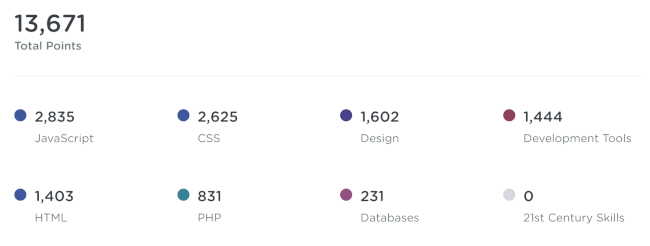
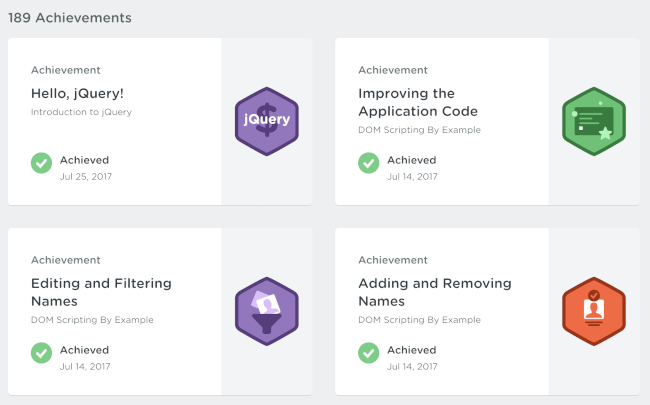
Health and Fitness
Fitness trackers like Fitbit and Apple Watch include a lot of gamification to make workouts more motivating and fun. For example, Fitbit users aim for goals like the number of steps per day, resting heart rate, pounds lost, and the number of minutes exercised per week.
- Data from workouts is tracked and displayed on a dashboard.
- A number of steps is counted and displayed throughout the day.
- Weight loss or maintenance is tracked and displayed graphically.
- Users earn badges for reaching specific goals.
Fitbit also includes virtual events and competitions. Users can compete against each other in daily or weekly goals, but they can also participate in “Fitbit Adventures” where they use their real-life steps to follow virtual trails, reach destinations, and collect hidden items.
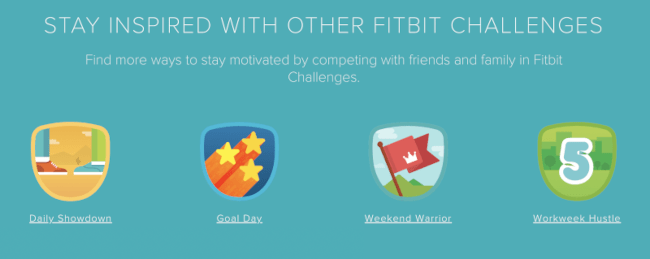
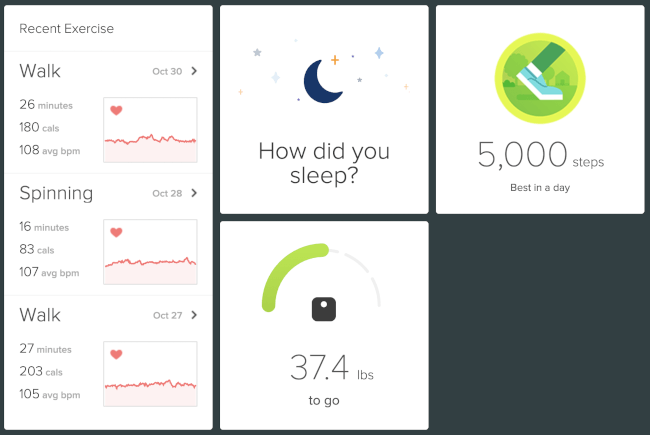
Work and Business
Gamification can be built into our daily working lives. Here at WebDevStudios, we use a Slack integration called HeyTaco that helps employees build relationships and give each other kudos for a job well done.
HeyTaco works by allowing users to give each other taco emojis in Slack or Microsoft Teams. They’re typically used to say thank you, good job, or congratulations. It goes a long way toward building camaraderie, especially in a remote work environment.
HeyTaco includes a few elements of gamification:
- Tacos add up like points.
- A monthly leaderboard ranks employees based on how many tacos they received that month.
- Tacos are exchanged for real-world rewards, set by the organization, such as gift cards or extra time off.
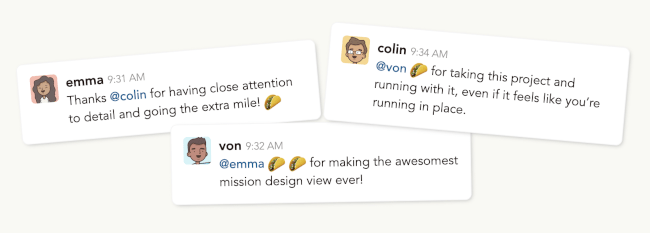
A 2019 study found that 89% of employees said that gamification made them feel more productive and 88% said it made them feel happier at work. Eighty-nine percent also said that when a task is gamified, they feel competitive and eager to complete it. (Source)
LinkedIn even has some gamification in the form of skill badges. Users take skill assessments, and if they score in the top 30%, they earn a badge that will display on their profile. The promise of a reward for a high score makes the skill assessments feel more important to the user, and it’s also useful information for potential employers.

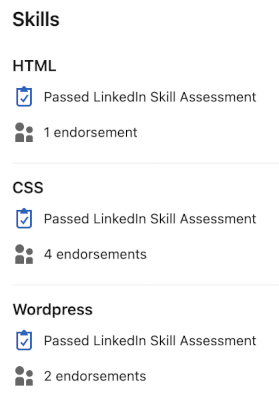
Gaming
Gamification is even found within gaming systems themselves. For example, Xbox Game Pass members earn Microsoft Rewards points by playing games that are included with the Xbox Game Pass library.
- Players earn points by playing Game Pass games daily and weekly.
- The points are tracked within the user’s profile in the Xbox console and mobile app.
- These points are redeemable for rewards like Xbox gift cards, in-game content, movies, and more.
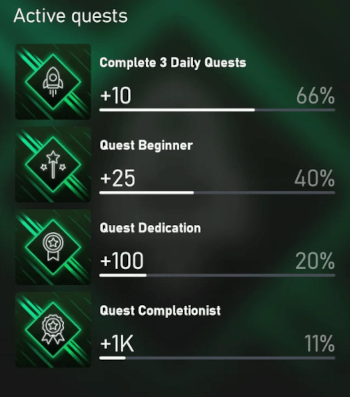
Gold Stars
Other forms of basic gamification exist in our daily lives. In elementary school, teachers sometimes award gold stars for good behavior or exceptional grades.
The stars are shown on a board next to each student’s name. This gamification takes the form of both points and a leaderboard and motivates kids to do well in school.
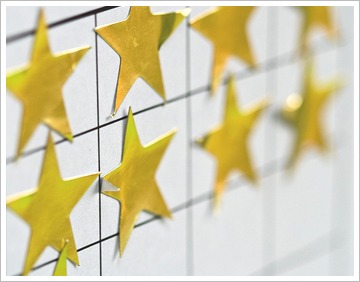
Website and App Gamification Statistics
Most website owners would like to improve certain stats on their website, like the bounce rate, time spent on the site, and the number of pages viewed. Higher user engagement with a website should lead to an increase in conversions and revenue.
- Gamifying your website can boost browsing time by up to 30%. (Source)
- A fully engaged customer tends to net an average of 23% premium in terms of profitability. Actively disengaged customers represent a 13% discount. (Source)
- Gamifying a website boosts comments by 13%, social sharing by 22%, and content discovery by 68%. (Source)
- Gamifying a website can lead to a 100-150% increase in engagement metrics including unique views, page views, community activities, and time on site. (Source)
These companies experienced measurable success with their website and app engagement rates due to gamification:
- Duolingo used gamification in language learning efforts to help grow its user base to more than 300 million. (Source)
- After introducing gamification to its mobile app, Foursquare expanded by 10 times within a five-year period. (Source)
- In 2018, Roblox launched its Roblox Education program, which helped increase the number of active Roblox users to over 90 million in a year. (Source)
- Autodesk used gamification to increase its trail usage rate by 40%, with conversion rates increasing by 15%. (Source)
- The logistics company Kenco saw a 45% increase in sales after using a sales gamification tool. (Source)
- Ford Motors increased sales by more than $8 million and boosted Facebook likes by 600% with gamified content. (Source)
- Coop saw an 39% average increase in spend amongst customers who stayed engaged with its gamification system long enough to collect a prize. (Source)
- Masai experienced a 50% cost-per-lead reduction. (Source)
- Samsung Nation increased its customer product reviews by 500% and site visits by 66%. (Source)
- Teleflora increased traffic by 105% and conversion rates by 92%. (Source)
- IBM has shown a 299% increase in comments posted. (Source)
- Texas bank Extraco tested a gamified process that taught clients about its offers and benefits, which led to a rise in conversion rate, from 2% to 14%, and raised customer acquisitions by 700%. (Source)
Ideas for Gamification of Your Website
Gamification is easy to apply to most websites with a little creativity and web development. Start with these ideas.
Gamification of eCommerce Websites
eCommerce websites are well positioned to take advantage of gamification since they already have a user database that can be expanded upon to include gamification elements like points and discounts.
Points and Progress Bars
A progress bar, shown prominently on the website, can track the customer’s number of purchases. The progress bar fills based on point accumulation for every purchase and amount spent.
Badge Achievements
Specific call-to-actions (CTAs) earn users badges and achievements. These CTAs are commonly used.
- Follow the company on social media
- Share an invitation to the website with a friend
- Use a coupon
- Sign up for the email list
- The customer’s first order
- Order number milestones such as 10 orders, 20 orders, etc.
Spin a Wheel
Displaying a wheel with various prizes such as discounts or free shipping is enticing. The user spins the wheel, which lands on a prize and adds the reward to their account.
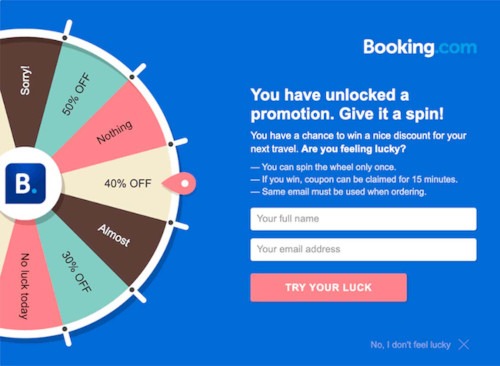
Product Recommender
Product recommenders are like quizzes that allow the user to find the products they’re looking for. The user selects from product attributes and the results of the quiz show the customers which of the store’s products meet their needs.
Checkout Progress Bar
Users stay on track by monitoring the progress bar during checkout. It shows the stages of the checkout, such as shipping, billing, and review. This lets the user know what to expect during checkout and where they are within the process.
Gamification of Business and Professional Service Websites
Professional service websites include businesses like creative studios, web development agencies, marketing agencies, health industry businesses (clinics, doctors, dentists), lawyers, accountants, insurance, cleaning services, home repair services, and more. These businesses sell services instead of products, but many of the gamification methods for eCommerce apply here as well.
Product Recommender
If your business offers different levels of service, such as different packages, a product recommender is an interactive way to let clients discover which of your packages is best for them. The user selects from package attributes and the results of the quiz show them which of the services best meets their needs.
Completeness Tracker
If your website includes a database of user accounts, it can be beneficial to encourage your clients to fill out their profile. A completeness tracker can motivate them to input data like their location, times available for meetings/appointments, user photos, budget range, and preferred types of services. You can request the data that’s important to your business.
Achievements and Badges
The completion of action items can result in achievement levels and badges. Here are some common examples.
- Following the company on social media
- Sharing an invitation to the company with a friend
- Signing up for the email list
- Completing a large project with the company
- Keeping up with recommended activities (like six-month dental checkups or annual home maintenance)
Gamification of SaaS Websites
Software-as-a-Service websites can take advantage of gamification in training and sales. Some of the top SaaS companies include Salesforce, HubSpot, G Suite, Microsoft Office 365, Amazon Web Services, and Dropbox.
In addition to the sales and purchasing ideas mentioned earlier, SaaS websites can make great use of gamification in educational training for their product.
Some education and training ideas are:
- Award the user achievements and badges for watching training videos.
- Give the user different amounts of points for completing different tasks. Some activities might award more points, such as 10 for watching a video, and 20 for passing a quiz.
- Guide the user through the process of setting up the software for their business with a completion tracker.
- Award the user a downloadable certificate when they have successfully passed a course.
Gamification of News, Review, Blog, and Informational Websites
Informational websites include news websites, product review websites, personal blogs, professional/industry blogs, or advice columns. Text articles mostly make up the composition of these sites, which lack complex features like eCommerce.
While these websites might not directly sell products, they can still benefit from some of the same elements of gamification. Think about ways to include these elements:
- Encourage website visitors to sign up for your email list with a spinning wheel of prizes. Prizes can be anything that makes sense for the topic you write about.
- If you review products, you can treat them like any e-commerce site would, and offer a recommendation quiz that will help users find the content they’re looking for.
- Include a “Surprise me!” button that sends users to a random article.
- Run giveaway contests for special content like books written by the authors of the website.
- Add interaction that’s similar to social media, such as a robust comments feature with upvotes and downvotes. If your site has a user database, you could rank commenters by the number of comments.
- Include interactive elements that give the reader something to do. Buzzfeed quizzes are a great example of this.
- Embed social media posts, especially from your readers, to build a community and take advantage of social media’s built-in gamification of likes and shares.
Conclusion
Gamification is a compelling way to add interaction and fun to your website. Moreover, it can enhance websites in any industry by using game-like elements such as points, badges, and progress bars.
Statistics show that gamification improves user engagement, motivation, and ultimately revenue. That said, it’s worth gamifying your website to cash in on these benefits.
Comments